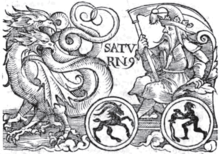PERCEPTIONS OF PEOPLE IN ORGANIZATIONS
by
Charles Lamson
In the past several articles, we discussed how people in organizations exhibit a wide variety of personalities. Most likely you thought first about how these various personalities applied to you - or which ones you thought of yourself as being low or high, and maybe which ones did not seem to apply to you at all. Then you may have thought about your current supervisor, or a past one, and thought how well that person seemed to fit one or more of the personalities described. If you engaged in either of these activities, you were involved in "person perception."
Person perception is a normal activity in which we engage whenever we come in contact with another person; it may range from a very intense activity, such as when you are interviewing someone you might want to hire where you consciously focus on that person and consciously try to figure out what makes him or her "tick." Or it may range all the way down to a fleeting notice of the other person where you simply record in your memory how that person appeared or was behaving at that moment. Over time and with sufficient contact, we form fairly stable ways of perceiving other people in our environment. We come to expect those people to behave consistently with our perceptions, and we adapt our own behavior in accordance with those expectations. The other people engage in the same person-perception process with us at the target. I develop an image of you, you develop an image of me. In addition, each of us develop an image of ourselves. Would it surprise you if your supervisor saw you differently than he/she saw her/himself? Would it surprise you if your supervisor saw you differently than you see yourself? Many people are actually surprised when these differences come to light to light. However, we should not be. With the possible exceptions of people in our immediate family, we usually spend only a small portion of each 24-hour day in the presence of any other given individual. Similarly, our supervisor spends the majority of her/his day outside our presence. Hence, few people are around any other person for a large enough portion of the time to really get a good opportunity to see how that other person behaves, much less thinks, most of the time.

Another element which leads supervisors and subordinates to mispercieve each other is a very common human reaction, which sometimes is referred to as "basic attribution error." Basic attribution error occurs when we attribute the causes of our own behavior, particularly our bad behavior, to external factors and the cause of another person's behavior to internal factors; this is referred to as an "error," because we exaggerate the impact of other people's personalities on their behaviors, and exaggerate the impact of situations on our own behaviors. You did it because you are a bad person; I did it because everyone else was doing it. You are late because you did not get up early enough to get here on time (you are delinquent); I am late because of unusually heavy traffic (I was unfortunately detained); It is just the way you are; I was a victim of circumstances.
Therefore, it should not be surprising that people see themselves differently than others see them. It is a normal impact of human contact. It is very difficult to see others as they see themselves, or to get, them to see us as we see ourselves. It is even more difficult to get others to see us as more nearly perfect than we really are, which is the way we usually want our colleagues and supervisors to see us.
One of the cold hard facts confronting people who hope to communicate effectively in organizations (or anywhere else for that matter), is that messages are interpreted through the receiver's impression of the source. Messages do not generally speak for themselves (even epitaphs on tombstones). As was indicated previously, meanings are in people, not messages. In order to interpret messages, we strive to understand what its source meant by it. Consider the simple phrase "nice job." What would you take this to mean if your supervisor had said that to you? If an incompetent coworker said it? If a coworker who cannot stand you said it? It is unlikely that the same meaning came through to you from these varied sources.
No message is interpreted by a receiver apart from its source. Almost 2,500 years ago, this point was made by Aristotle when writing about the "ethos" or image of the communicator. It is not just a modern phenomenon. The source/message relationship is so strong that if the receiver does not know who the source is, it is likely the receiver will create a source in his or her mind. (Mccroskey and Dunham, 1966). Political candidates have long understood this, and have used well-liked and respected people to introduce them at political gatherings. In that way, the "sponsorship effect" of these positively perceived people "rubs off" on the unknown, or little known, candidates.
If your supervisor thinks you are a slacker, whatever you may say or do, verbally or non-verbally, will be interpreted as a message coming from a slacker. If we want to communicate effectively with our supervisors and coworkers. Therefore, it is critical that we create positive perceptions of our supervisors, so that we do not generate distorted interpretations of her or his messages. There are a wide variety of person's perceptions which have been found to be important in organizational communication. Several of these will be outlined in the following articles.
To be continued...
*SOURCE: ORGANIZATIONAL COMMUNICATION FOR SURVIVAL 3RD ED. BY VIRGINIA P. RICHMOND, JAMES C. MCCROSKEY AND LINDA L. MCCROSKEY; PGS. 96-98*
END
|











